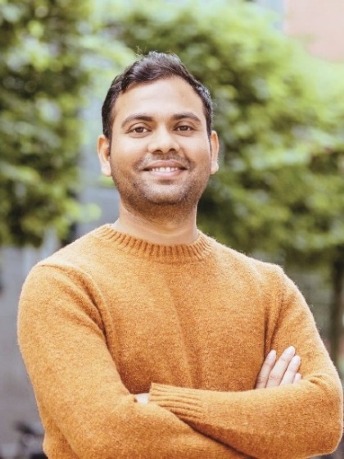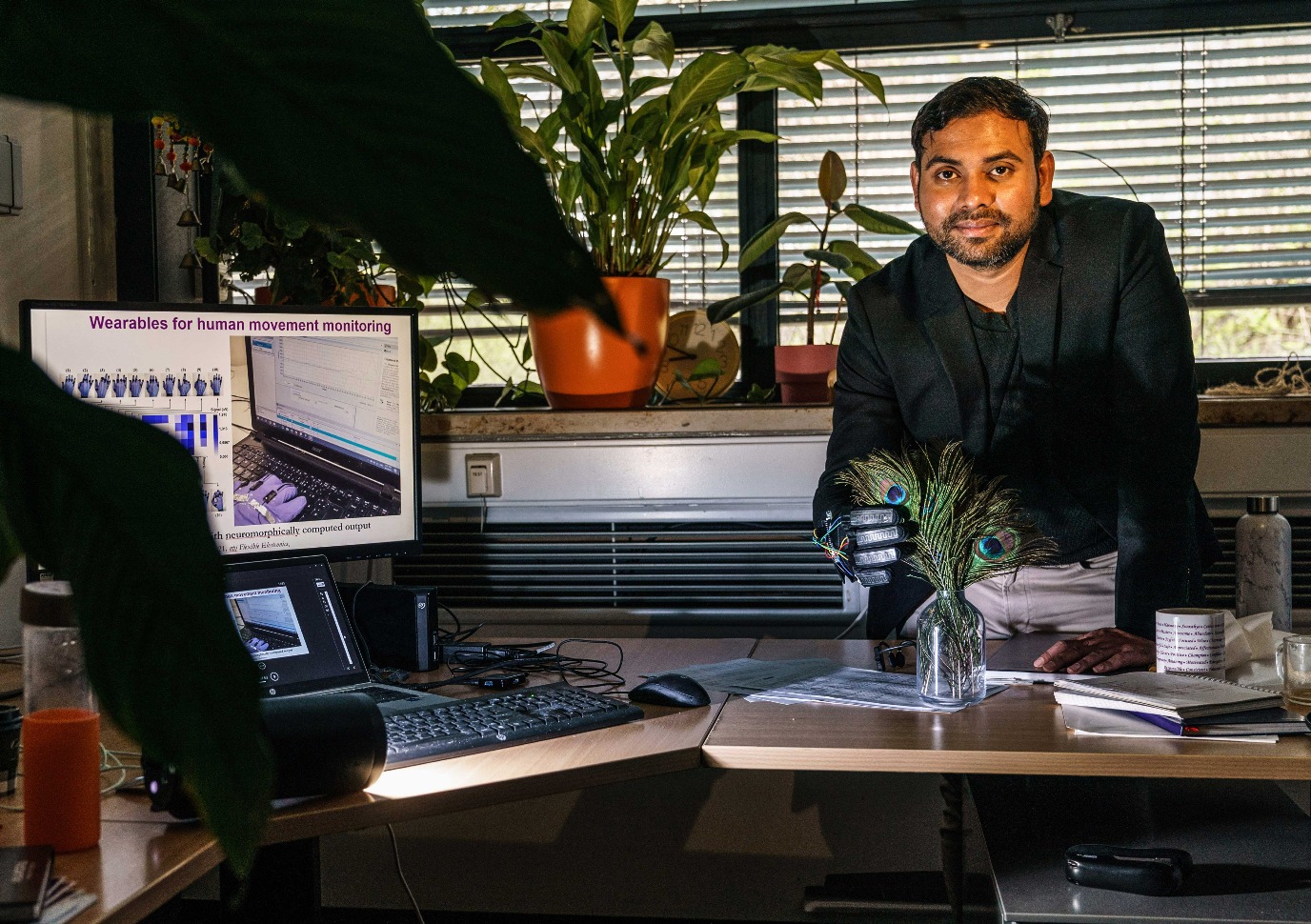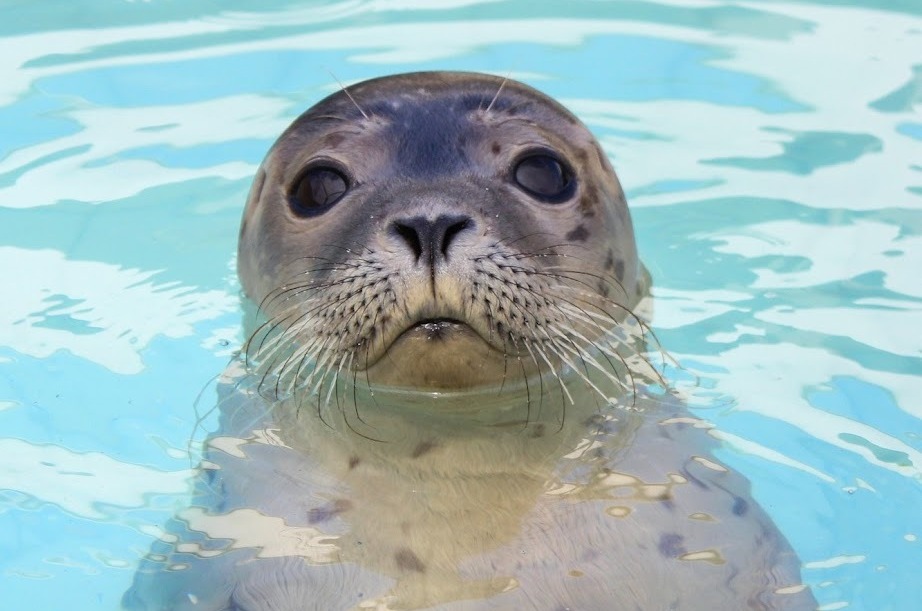Seals’ whiskers are an example of perfect technology

Ajay Kottapalli develops advanced sensors based on animal senses — for example the whiskers of seals. ‘They have evolved absolutely perfectly. We have calculations that prove it.’ He is always looking for new applications in the technology of biological phenomena. Together with his colleagues, he launched a start-up in Groningen: Sencilia.
Text: Nienke Beintema, Photo: Reyer Boxem
Velcro tape inspired by seeds, drones that fly like dragonflies, and needles that pierce like a mosquito's proboscis. These are all examples of biomimicry, also known as bio-inspired design: technology and design inspired by nature.
Super sensitive senses
The Indian physicist Ajay Kottapalli is raising this concept to new heights: he designs micro-electromagnetic systems (MEMS) based on animal senses. And not just any senses. He investigates extremely advanced, super sensitive senses that humans do not have. For example, the tiny hairs, or cilia, used by blind fish to find their way through underground caves. Thanks to these cilia, fish can perceive very subtle water currents, which allows them to find food and avoid obstacles. Another example are the whiskers of seals, which allow them to flawlessly follow fish in even the murkiest of water.
Kottapalli uses these remarkable senses as inspiration for high-tech sensors. ‘There are many more such animal senses in nature that we can learn a lot from,’ he explains at the Zernike Complex. His entire office at the Engineering Physics department is bio-inspired: the space is filled with giant green plants and interesting-looking gadgets, like a sensorized glove that can be used to ‘feel’ a surface.

How can we as humans use these remarkable senses?
‘Oh, I can come up with endless applications. Imagine an underwater robot equipped with this kind of cilia and whiskers. It would be able to find its way in the deep sea, for example for exploration and research. A swarm of these robots could swim autonomously in formation, perfectly streamlined with each other. The great thing is: there are probably lots of applications that we cannot yet imagine, but they will emerge as we move forward.’
Can you tell us a little more about those whiskers? How can we know so precisely what seals can do with them?
‘Yes, that is a fascinating story,’ says Kottapalli, as he opens a YouTube video on his computer screen. ‘German researchers trained a seal to swim behind a fish-like robot, blindfolded and wearing headphones. Isn't that amazing? The thing is, it takes years of training before a seal will let itself to be blindfolded.’
We see Henry the Seal, blindfolded, underwater, unerringly following the curved trajectory of the ‘fish’, one whole minute after it swam past. Kottapalli: ‘Henry can localize fish from a great distance, even after it swims away around the corner.’
How does that seal do that?
‘With his whiskers. He uses them to feel the swirls that the fish leaves behind in the water. He can follow the trail of swirls. We studied those whiskers very carefully, which we get them from Pieterburen, the Dolphinarium, and Wildlands Emmen. And do you know what we found? From the point of view of fluid dynamics, those whiskers are perfectly evolved. We calculated it using computer models and 3D-printed whiskers. The whiskers are elliptical in cross-section, and they have tiny waves along their entire length. Their curvature is perfectly in line with certain mathematical principles. Thanks to this shape, they do not vibrate when the seal swims, Only in response to the swirls caused by the fish do they vibrate.’

That is the principle you want to imitate; Was that the reason you started your own company?
‘Broadly speaking, yes, but we are more focused on medical applications. My group specializes in miniature sensors that can very accurately measure tiny fluid flows. Together with my former postdoc Amar Kamat, who is now the CEO of our start-up, Sencilia, I wanted to bring this knowledge to the market. We were attracted to the medical field because you can make a significant difference in this field with this kind of technology. We won a Takeoff-1 Grant from the Dutch Research Council, which allowed us to test our ideas for technical and commercial feasibility. Following a series of meetings with UMCG doctors, we came up with the idea of using our sensors to make intravenous administration of medicines much more accurate and safer. We received help from UG Ventures and Triade, the entrepreneurial initiatives of the UG and UMCG, which allowed us to launch the Sencilia start-up in 2021.’
And, does your technology work in an IV drip?
‘Certainly! We had highly promising results in the lab, and we will soon start a pilot project at the Erasmus MC in Rotterdam. The big companies in the intravenous drip industry have already shown interest, which indicates that there really is a lot of potential. I am also incredibly proud that our start-up won the 2024 Academic Startup Competition of Techleap.nl.’
How did you actually end up in Groningen?
‘My postdoc project in the US came to an end. So I applied for permanent positions all over the world. There was an open vacancy at ENTEG, the Engineering and Technology Institute Groningen. It is a relatively new technology institute, but one with big ambitions and big names. I find it more important to look at the people rather than the institutes. And ENTEG is on the rise. There are advanced plans for us to join 4TU: the partnership between the universities of Delft, Twente, Eindhoven, and Wageningen. I think that's fantastic: to be part of something that is still very much being developed, to be able to contribute to this development.’
"ENTEG is a relatively new technology institute but one with big ambitions and big names"
And, has it worked out as you had hoped?
‘Yes, I absolutely love it here. The interdisciplinary character, meaning the collaboration with other departments within the UG... It's really easy to make contact with people here. I can just send an email to a professor at UMCG and say: I have an idea. Can I drop by for a chat? They will answer straight away. In other countries, there is a lot more hierarchy. Here, it looks as if the possibilities are unlimited. That is of course not the case — time and money clearly set limitations, as does the functioning of the corporate sector. But I can at least explore ideas as much as I like here. As far as that is concerned, I really am a scientist. I get so incredibly happy exploring nature's senses, without immediately thinking of applications.’
This article has been taken from the online alumni magazine Broerstraat 5.
About Kottapalli
Ajay Kottapalli (India, 1985) is associate professor at the UG. He studied both Physics and Solid-state Technology in India. He completed a PhD in Mechanical Engineering at the Nanyang Technological University (NTU) in Singapore. He went on to work as a postdoc at the Massachusetts Institute of Technology (MIT) in the US, via the Singapore-MIT Alliance for Research and Technology (SMART). He came to the UG in 2018 to start his own group. He is also still affiliated with MIT and remains the co-founder and scientific advisor of Sencilia BV.
| Last modified: | 23 May 2024 6.09 p.m. |
More news
-
24 March 2025
UG 28th in World's Most International Universities 2025 rankings
The University of Groningen has been ranked 28th in the World's Most International Universities 2025 by Times Higher Education. With this, the UG leaves behind institutions such as MIT and Harvard. The 28th place marks an increase of five places: in...
-
05 March 2025
Women in Science
The UG celebrates International Women’s Day with a special photo series: Women in Science.
-
16 December 2024
Jouke de Vries: ‘The University will have to be flexible’
2024 was a festive year for the University of Groningen. In this podcast, Jouke de Vries, the chair of the Executive Board, looks back.
